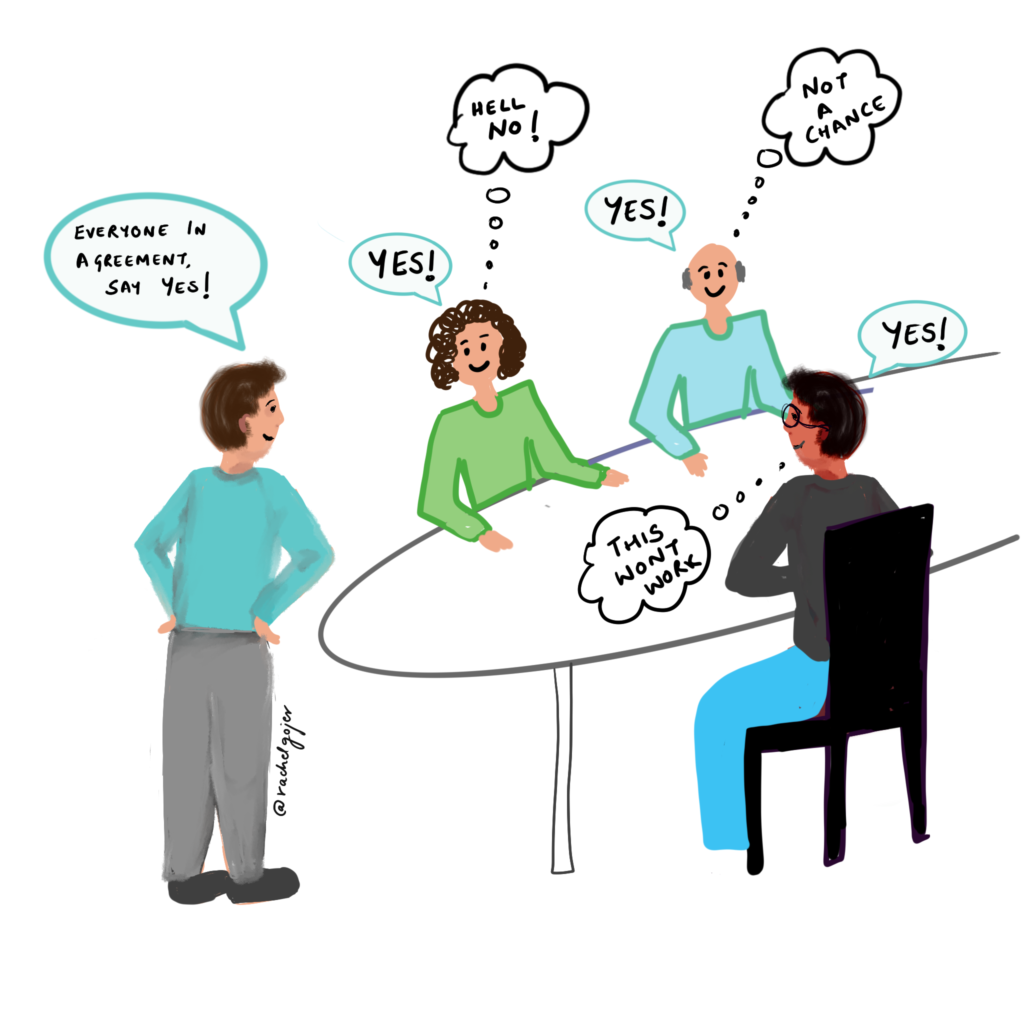What is groupthink?
Think of the last time you were in a team meeting and someone shared a suggestion. Maybe 2-3 people chimed in to support the idea. You on the other hand thought the idea did not sound that great and were not completely on board.
What did you do?
Did you voice your dissent?
Or did you go along with the idea?
Groupthink is a phenomenon when a group of people make suboptimal to outright irrational decisions to maintain harmony or conformity in a group.
Why does it occur?
- Cohesiveness: Teams and groups that are highly cohesive are more likely to exhibit groupthink. When a person’s sense of identity is derived from a group identity they are much less likely to question or raise concerns
- Influential or commanding leader: If the leader is a strong personality and shows to be leaning towards a specific idea it is less likely for people in the team to raise a contradiction
- Lack of psychological safety: When people don’t feel safe raising a dissent or fear that there might be consequences to speaking their mind they tend to resort to consensus
- Low subject knowledge: When people don’t know the subject they may assume that others know better which may not necessarily be true
Problems caused by groupthink
- Suppresses individual thought. If you have hired for diversity and your business can benefit from varied perspectives, groupthink significantly reduces individual contributions and ideas
- Limits creativity and out of box thinking: It prevents people from thinking beyond the obvious or experimenting with new ideas
- Prevents the team from seeing pitfalls and preventing them: Because the team stops thinking beyond the obvious it also often misses obvious problems and challenges.
How can a leader prevent groupthink?
- Start by listening for opinions rather than stating their opinion first.
- Encourage people to think about the idea through different lenses. The Six thinking hats are one good way to do so
- Encourage dissent, contradictory opinions and debates.
- Build psychological safety in the team

